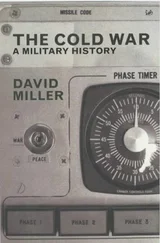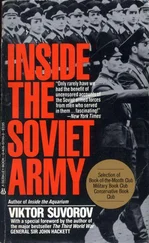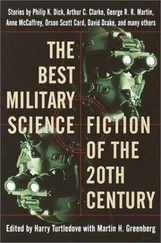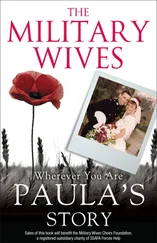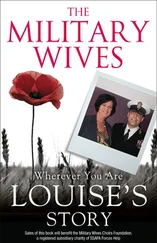Viktor Suvorov - Inside soviet military intelligence
Здесь есть возможность читать онлайн «Viktor Suvorov - Inside soviet military intelligence» весь текст электронной книги совершенно бесплатно (целиком полную версию без сокращений). В некоторых случаях можно слушать аудио, скачать через торрент в формате fb2 и присутствует краткое содержание. Год выпуска: 1984, ISBN: 1984, Жанр: Публицистика, Прочая документальная литература, на английском языке. Описание произведения, (предисловие) а так же отзывы посетителей доступны на портале библиотеки ЛибКат.
- Название:Inside soviet military intelligence
- Автор:
- Жанр:
- Год:1984
- ISBN:0-02-615510-9
- Рейтинг книги:3 / 5. Голосов: 1
-
Избранное:Добавить в избранное
- Отзывы:
-
Ваша оценка:
- 60
- 1
- 2
- 3
- 4
- 5
Inside soviet military intelligence: краткое содержание, описание и аннотация
Предлагаем к чтению аннотацию, описание, краткое содержание или предисловие (зависит от того, что написал сам автор книги «Inside soviet military intelligence»). Если вы не нашли необходимую информацию о книге — напишите в комментариях, мы постараемся отыскать её.
Inside soviet military intelligence — читать онлайн бесплатно полную книгу (весь текст) целиком
Ниже представлен текст книги, разбитый по страницам. Система сохранения места последней прочитанной страницы, позволяет с удобством читать онлайн бесплатно книгу «Inside soviet military intelligence», без необходимости каждый раз заново искать на чём Вы остановились. Поставьте закладку, и сможете в любой момент перейти на страницу, на которой закончили чтение.
Интервал:
Закладка:
'Yuri Vladimirovich, I won't give you one film, I'll give you all twenty. Only I will show them at nine o'clock in the Politburo, and at ten o'clock I'll send my chaps over to the Central Committee to give you all the films.'
Andropov angrily slammed down the receiver. A concerted roar of laughter shook the walls of the underground command point. The senior operator, choking with laughter, entered the conversation in the log book.
(After Andropov became General Secretary of the Communist Party and Soviet Leader, Ivashutin still survived as GRU chief, because any attack from Andropov could easily have upset the fragile Party-Army balance with unpredictable consequences for Andropov himself.)
Chapter Eight
The Centre
Unlike the KGB, the GRU does not try to advertise itself, and its head office does not rise in the centre of the capital on its most crowded square. The head office of the GRU, although it is in Moscow, is by no means easy to find. It is enclosed from three sides by the central airport, the old Khodinka field. The aerodrome is surrounded on all sides by restricted buildings, among which are the offices of three leading aviation firms and one rocket construction firm, and the military aviation academy and the aviation institute. In the centre of these secret institutes the aerodrome carries on with its life as if half-asleep. Very, very rarely, in the middle of the night, a covered-up fuselage of a fighter aircraft is taken out of a hangar, loaded onto a transport aeroplane and transported somewhere into the trans-Volga steppe for testing. Sometimes another transport aircraft lands, goes up to the GRU building and unloads a foreign tank or rocket, after which everything becomes peaceful again. For two months of the year preparations are carried out for the grandiose military parades, and the roar of tank engines can be heard on the airfield. The parades finish, but the guarded area remains guarded, an empty field in the centre of Moscow patrolled by watchdogs. Not one civil aircraft or helicopter disturbs the quiet of Khodinka, only the watchdogs howl at night like wolves. How many of them are there? One loses count. No, from three sides it is impossible to get to the GRU. From the fourth side, too. On the fourth side there is the Institute of Cosmic Biology, with more dogs and electric barbed wire. A narrow little lane leads through a blind wall ten metres high, behind which is the 'Aquarium'. In order to penetrate into the inner fortress of the GRU one must negotiate either the area of the secret aerodrome or the area of the top secret institute.
The head office of the GRU is a nine-storey extended rectangle. On all sides the building is surrounded by a two-storey structure, the windows of which give onto the central courtyard. The external walls have no windows at all. The fifteen-storey building adjacent to the area also belongs to the GRU, although it is situated outside its external walls. Many families of GRU officers live here, and the building has a completely normal appearance and looks like an ordinary block of flats. Only a certain number of the flats, however, are used for living purposes; the others are used by the service for official purposes. The whole of the area, centimetre by centimetre, is under surveillance from the tele-cameras and patrolled continuously by gentlemen with big, fat faces. But even if it were not thus, a stranger there would be apprehended immediately. Any of the little old men seated on benches (minimum twenty years' service in the GRU) would immediately inform the necessary people if he saw something untoward. Nobody is allowed to bring a car into the GRU's inner area, not even the Minister of Defence or General Secretary. One is only admitted after passing through a special inspection and sophisticated electronic equipment. Nobody may bring in so much as a cigarette lighter, still less a briefcase. There must be no metallic object on your person, not even a belt-buckle - the GRU recommends braces. All necessities for work and life are to be found inside, including cigarette lighters and fountain pens. The GRU gives them out - after they have been checked, of course.
The chief of the GRU is subordinate to the chief of the general staff and is his deputy. Directly subordinate to the chief of the GRU are the GRU's command point, the deputy chief and a group of advisers. The organisational units constituting the GRU are directorates, directions, and sections. In units which are not directly concerned with the acquisition and processing of information there exist the divisions of directorates, departments and sections. The military rank of the chief of the GRU is Army General. Under him are a first deputy and deputies. In the case where the deputy has several directorates under his command, his military rank will be colonel-general. If he only has one directorate, lieutenant-general. Chiefs of directorates are lieutenant-generals. The deputies of heads of directorates, heads of directions and departments are major-generals. The deputy heads of directions and departments, the heads of sections and their deputies are colonels. The rank-and-file members of sections are called senior operational officers and operational officers. The military rank of a senior operational officer is colonel, of an operational officer lieutenant-colonel.
An overwhelming number of GRU officers hold the military rank of colonel. This, however, does not at all mean that they are equal amongst each other. Between the colonel who fulfils the duties of a senior operational officer and the deputy head of a direction who is also a colonel there is a wide gulf. The high service ranks existing in the GRU do not preclude the appointment of a very young captain or senior lieutenant to the post of senior operational officer, either. The system adopted by the Soviet Army permits this. A captain may be an acting major, or a senior lieutenant may be an acting colonel. Seniority is judged not by the pips on the officer's shoulder, but by the position he holds.
In total the GRU has sixteen directorates: most of them have a number from one to twelve. Certain numbers do not exist and the directorate is simply called by its name, as for example the personnel directorate. Directions and departments forming parts of a directorate have numbers, for example '41 Direction' means the first direction of the fourth directorate. Directions and departments not forming part of a directorate have a single number with the letters GRU added, for example, the first department GRU. The hierarchy in the GRU is as follows. The chief of the GRU has one first deputy and seven deputies beneath him. He controls:
i The Illegals Section. With the help of this section he personally directs effective illegals and agents about whom nobody knows. He also directs his own first deputy.
ii First Deputy Chief of the GRU (colonel-general), beneath whom are all the procurement organs which provide information.
iii The Chief of Information (colonel-general) in charge of all the processing organs of the GRU.
iv The Chief of the Political Section (lieutenant-general).
v The Chief of the Electronic Intelligence Directorate (lieutenant-general).
vi The Chief of Fleet Intelligence (vice-admiral).
vii The Chief of the Cosmic Intelligence Directorate (lieutenant-general).
viii The Head of the Soviet Army Academy (colonel-general),
ix The Head of the Personnel Directorate (lieutenant-general).
Chapter Nine
The Procurement Organs
All units of the GRU are divided in their designations into procurement, processing and support. The great majority of the procurement organs, the providers of information, are controlled by the first deputy chief of the GRU. They include the first directorate, which carries out agent intelligence on European territory, and consists of five directions, each of which carries out agent intelligence on the territories of several countries (each direction consists of sections which direct undercover residencies in one of the countries concerned); the second directorate with an analogous organisation carrying out agent intelligence in America, both North and South; the third directorate, which carries out agent intelligence in Asia; and the fourth directorate, dealing with agent intelligence in Africa, and the Middle East. Each directorate contains about 300 high-ranking officers in the Moscow centre, and about 300 abroad. Besides these four directorates, there are also four directions which undertake the same duties. These directions do not form parts of directorates but are answerable to the first deputy chief. The first GRU direction carries out agent intelligence in the Moscow area and it has its influential representatives in all Soviet official institutions used by the GRU as cover: the Ministry of Foreign Affairs, the Ministry of External Trade, Aeroflot, the Merchant Navy, the Academy of Sciences and so forth. These representatives fit their young officers into slots in the institution serving as cover and guarantee their smooth progress in their future activities. In addition some GRU officers, on their return from overseas, continue to work in their covering organisation and not in the head office. Using these officers, the first direction recruits foreign military attaches, members of military delegations, businessmen and representatives of aviation and steamship companies. The second direction carries out agent intelligence in the area of East and West Berlin, a gigantic organisation which again does not form part of a directorate. The third direction is concerned with agent intelligence in national liberation movements and terrorist organisations. Its favourite child until recently was the Palestine Liberation Organisation. The fourth department carries out agent intelligence work from Cuban territory against many countries, including the United States. In many respects the fourth direction duplicates the activity of the second directorate. It has unlimited power in the ranks of the Cuban intelligence service and with its help actively penetrates and endeavours to direct the activities of unaligned movements.
Читать дальшеИнтервал:
Закладка:
Похожие книги на «Inside soviet military intelligence»
Представляем Вашему вниманию похожие книги на «Inside soviet military intelligence» списком для выбора. Мы отобрали схожую по названию и смыслу литературу в надежде предоставить читателям больше вариантов отыскать новые, интересные, ещё непрочитанные произведения.
Обсуждение, отзывы о книге «Inside soviet military intelligence» и просто собственные мнения читателей. Оставьте ваши комментарии, напишите, что Вы думаете о произведении, его смысле или главных героях. Укажите что конкретно понравилось, а что нет, и почему Вы так считаете.


